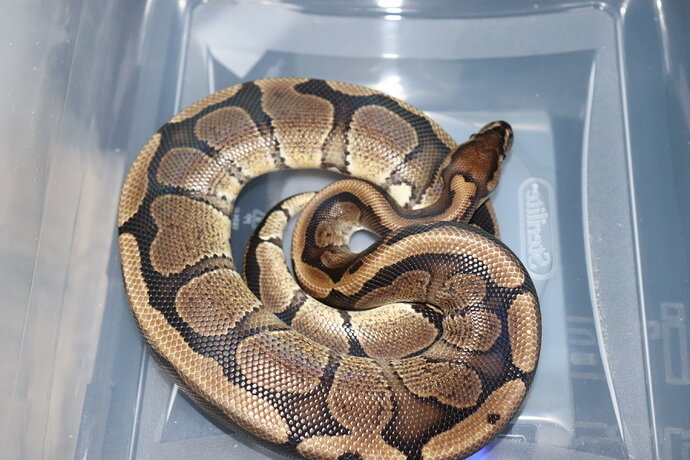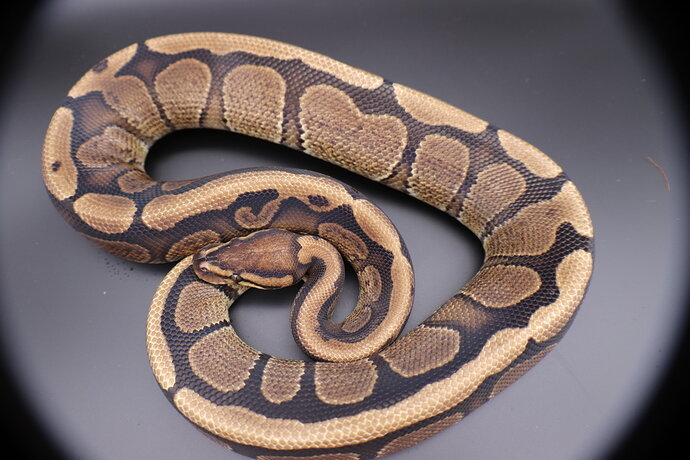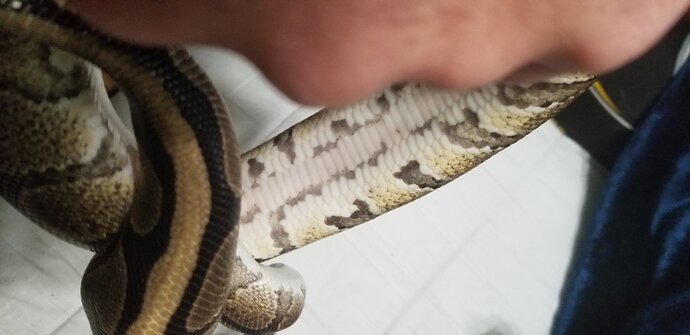These are all now in “wiki” state, please read the rules above before editing.
0. Normal
Morph Encyclopedia: #0000
Thomas Eagle - Eagle Reptiles
NORMAL
“Wild Type”
Image fromMaxine Gravino at My Herp Shed
Base Morph
Quick Facts
: Conservation status, Scientific classification …
Ball python
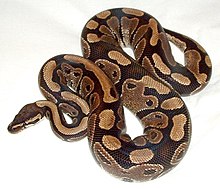
Conservation status

Least Concern (IUCN 3.1)
Scientific classification
Kingdom: Animalia
Phylum: Chordata
Class: Reptilia
Order: Squamata
Suborder: Serpentes
Family: Pythonidae
Genus: Python
Species: P. regius
Binomial name
Python regius
(Shaw, 1802)

Distribution map of ball python
Synonyms
-
Boa regia Shaw, 1802
-
Enygrus regius - Wagler, 1830
-
Cenchris regia - Gray, 1831
-
Python Bellii Gray, 1842
-
Hortulia regia - Gray, 1849
Source: Wikipedia
INTRODUCTION:
The ball python (Python regius), also called royal python, is a python species native to West and Central Africa. It has the potential to reach a maximum adult length of 182 cm (6.0 ft). Pythons are a family of nonvenomous snakes found in Africa, Asia, and Australia that rather than inject venom or attacking prey with barrage of strikes, they are Constrictors and will use their muscles to over power and kill.
VISUAL DESCRIPTION:
Head: Black or dark brown with stripes on both sides, usually just behind the nostrils. Usually has a lighter brown patch on the crown and have dark eyes that often carry the same pattern as their bodies, with stripes or lines running through them. When going into shed, their eyes will change color, appearing a hazy blue or gray.
Image from Meerkatlyndz
Body: The Normal Ball Python has black or dark brown ‘puzzle-like’ pattern with light brown or tan blotches (alien heads) on the back and sides. The spine usually has beads or stripes of pattern, moreso towards the bottom end.
Image from Chris McDougle at Snakenstein Reptiles, LLC
Belly: Its white or cream belly is scattered with black markings and stripes, the belly (ventral) scales are larger than anywhere else on the snake.
Image from bluefeathurs
Tail: Patterns normally come to an end with a single stripe but it is not unusual for there to be a beaded/chain look. On the underside you will find the animals cloaca, this is where reproductive activity occurs.
Image from bluefeathurs
Other:
Known Issues: Wild-caught specimens have greater difficulty adapting to a captive environment, which can result in refusal to feed, and they generally carry internal or external parasites.
Useful links:
Buy a Normal Ball Python
Help Identifying your Normal
Let’s give love to the normals💖
Wikipedia
Other images of Normals:
Image from bluefeathurs
Image from Rod Foster at UK Pythons & Boas
1. Pastel
Morph Encyclopedia: #0001
Thomas Eagle - Eagle Reptiles
PASTEL
Image from Deborah Stewart at Stewart Reptiles
Base Morph Incomplete Dominant (co-dom)
INTRODUCTION:
VISUAL DESCRIPTION
Head: Pastel Ball Pythons usually have faded/pale yellow heads at birth that darken with age, though some can keep the faded look. They are easily told apart from a Normal by the faded yellow crown, white lips and green eyes, though keep in mind that on rare occasions a Normal can also have green eyes.
Image from Deborah Stewart at Stewart Reptiles
Body: Pastel Ball Pythons bodies can be told apart from Normals by the bright yellow scales within the “alien heads” and blushing within the black markers.
Image from Deborah Stewart at Stewart Reptiles
Belly: Pastel Ball Pythons have very clean undersides compared to the track-marks and spotting of a Normal Ball Python. Along either side of the belly, bright yellow ‘flames’ stretch up through the black markers into the body pattern.
Image from Deborah Stewart at Stewart Reptiles
Tail: The Pastels tail is much like a Normal Ball Python but follows the Pastels colouration.
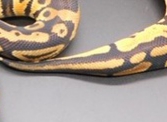
Image from Deborah Stewart at Stewart Reptiles
Other:
- Blushing: Pastels show ‘blushing’ throughout their entire body, usually in-between the “alien head” outlines. When combined with other morphs, these patches of blushing can cause huge contrast in body markings.
Super Form:
(Pastel X Pastel)
The homozygous or “Super” Pastel, usually retains its yellow coloration later into life, has a more reduced “alien head” pattern, a noticeable faded head and extensive blushing throughout that often looks to have a blue/purple hue.

Image from GLD Reptiles
Image from Snake Savey
Known Issues: N/A
Useful links:
Compare to a Normal Ball Python
Buy a Pastel Ball Python
Help Identifying your Pastel
Let’s See Them Pastels
In Comparison to a Normal/Wild Type: (Left) Normal (Right) Pastel.
Image from T_H_Wyman at Asplundii Genetics
Other images of Pastels:
Image from MI Reptiles
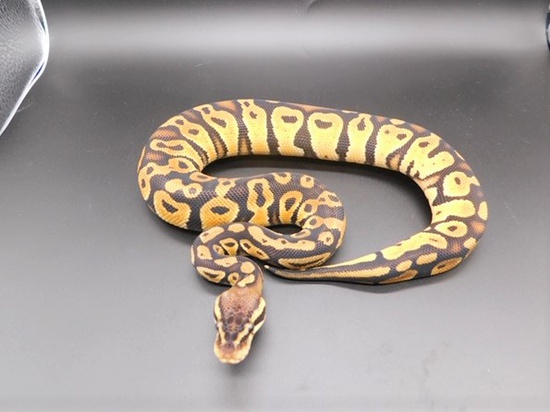
Image from PJC Ball Pythons
Multiple Gene Pastels:
Super Pastel Lesser Clown
Image from Deborah Stewart at Stewart Reptiles
Pastel Black Pastel
Image from Deborah Stewart at Stewart Reptiles
Pastel Enchi
Image from Deborah Stewart at Stewart Reptiles
2. Piebald
Morph Encyclopedia: #0002
Thomas Eagle - Eagle Reptiles
PIEBALD
“PIED”
Image from Deborah Stewart at Stewart Reptiles
Base Morph Recessive
INTRODUCTION:
The word piebald originates from a combination of “pie,” from magpie, and “bald”, meaning white patch or spot. The reference is to the distinctive black-and-white plumage of the magpie.
Snakes, especially ball pythons, may also exhibit varying patches of completely pigmentless scales along with patches of pigmented scales.
VISUAL DESCRIPTION
Head: Resembles the head of a Normal ball python, usually black or dark brown with stripes on both sides, normally just behind the nostrils. The pattern tends to start in a ‘Y’ shape at the top of the neck. Most piebald ball pythons have patterned heads, though some can be mostly white with just a slight smudge.
Image from Deborah Stewart at Stewart Reptiles
Body: The body of the Piebald ball python is one of the most recognisable in the reptile hobby. The sharp contrast between an unrecognisable pattern and bright white scales make “pied” still one of the most powerful genes in many breeders collections. Where ‘alien heads’ would be on a normal ball python, blotches and stripes show down the body of the Piebald. The amount of pattern is completely random and can range from completely absent (high white) to covering the snakes whole body (low white).
Image from Deborah Stewart at Stewart Reptiles
Belly: The bright white belly of Piebalds are usually free from markings, leaving a smooth glossy row of ventral scales, though some may show spots or smudges.
Image from Deborah Stewart at Stewart Reptiles
Tail: Piebalds tails can vary from being completely white or full of pattern. Piebalds tend to show most of the pattern higher up the body, with it decreasing towards the tail and it is only in rare cases have they been documented to have a completely or near patternless upper body.
Image from Deborah Stewart at Stewart Reptiles
Other:
- Ringers - Ball Pythons sometimes show visual ‘paradoxes’ such as unusually placed markings or blotches of discolored scales. Piebald Ball Pythons seem to have offspring that show this trait more frequently than other morphs in what is referred to as a ‘ringer’, where a ring or patch of scales is different to what it should be, considering our current understanding of their biology.
Image from Holly Jenkins
- Spots - On rare instances, some Piebalds can have ‘paradox’ spots, which can be from individual scales to clusters.
Image from Deborah Stewart at Stewart Reptiles
Known Issues: all Piebald Blue Eyed Leucistics have Microphthalmia. (developmental disorder of the eye in which one or both eyes are abnormally small and have anatomic malformations.)
Useful links:
Compare to a Normal Ball Python
Buy a Piebald Ball Python
Help Identifying your Piebald
Wikipedia - Piebald
Show us your Pied stuff!
Piebald rules!
In comparison to a Normal/Wild Type:
(Left) adult Piebald (right) adult Normal
Image from Alpine Reptiles
(Left) juvenile Piebald (Right) juvenile Normal
Image from Alpine Reptiles
Other images of Piebalds:
Image from unkn0vvn1221
Image from Brandon Osborne at Osborne Reptiles
Image from Duvvers
Multiple Gene Piebalds:
Pinstripe Piebald
Image from Deborah Stewart at Stewart Reptiles
Banana Piebald
Image from Deborah Stewart at Stewart Reptiles
Black Pastel Piebald
Image from Deborah Stewart at Stewart Reptiles
Albino Piebald
Image from Deborah Stewart at Stewart Reptiles
Videos:
Mutation Creation Canada -
https://youtu.be/kj2rFt-FdNw




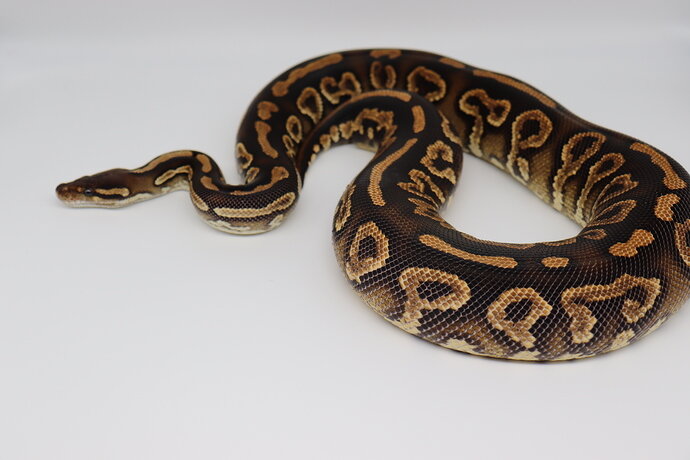

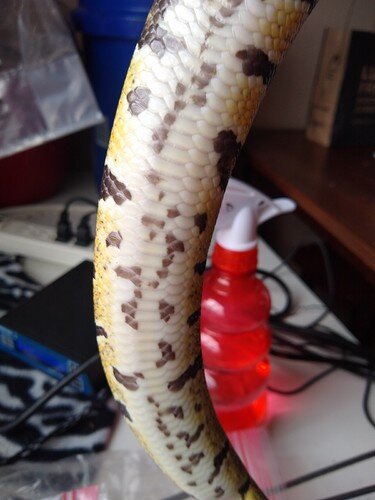
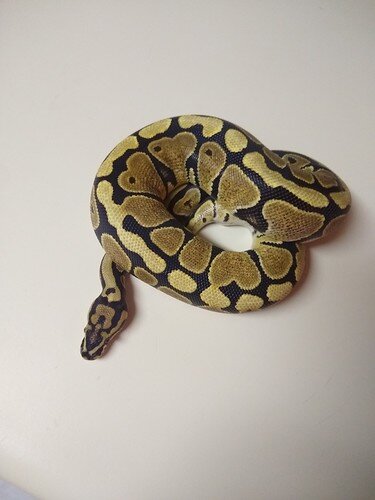
 show me them Bamboos
show me them Bamboos